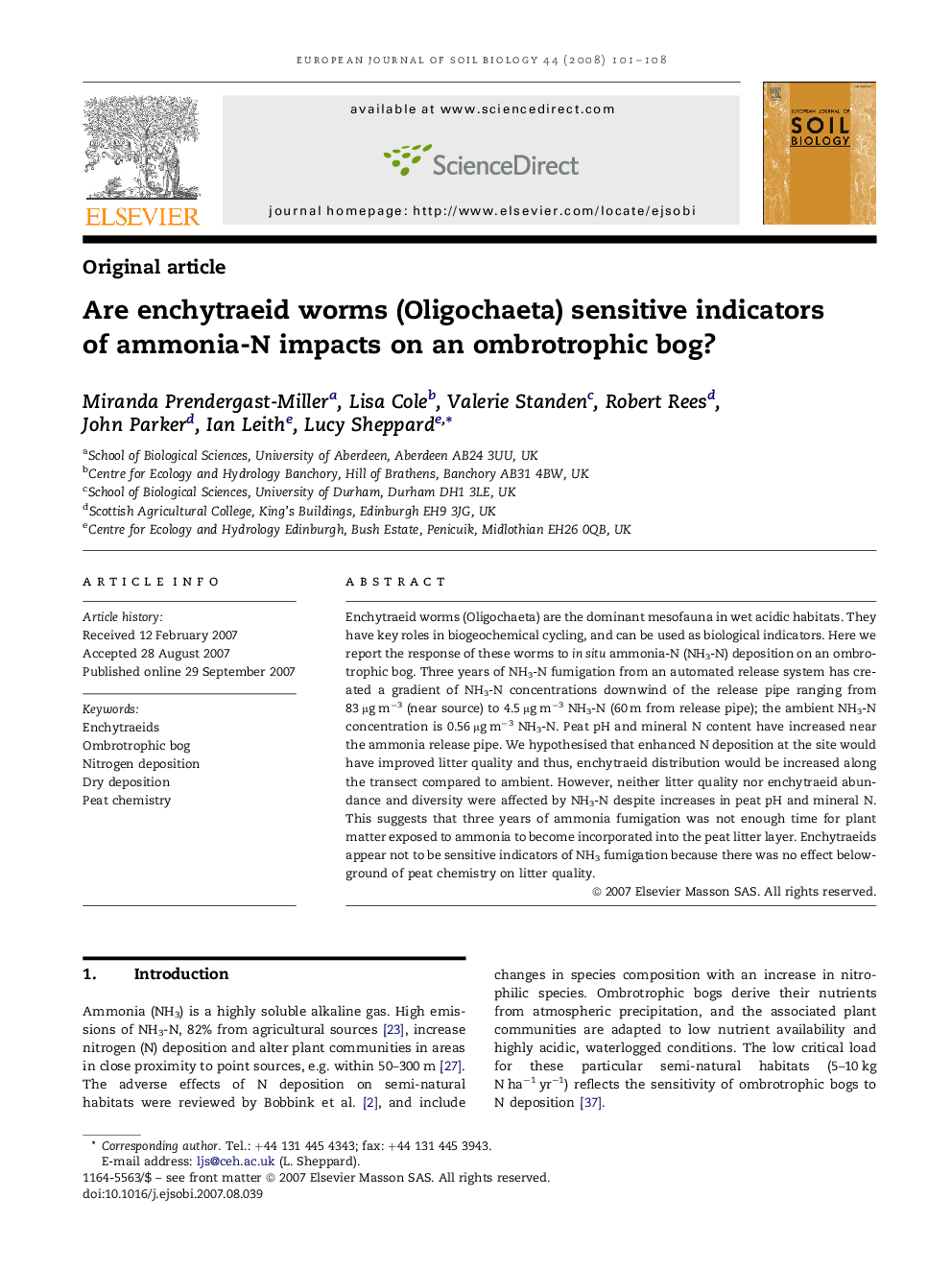| Article ID | Journal | Published Year | Pages | File Type |
|---|---|---|---|---|
| 4392359 | European Journal of Soil Biology | 2008 | 8 Pages |
Abstract
Enchytraeid worms (Oligochaeta) are the dominant mesofauna in wet acidic habitats. They have key roles in biogeochemical cycling, and can be used as biological indicators. Here we report the response of these worms to in situ ammonia-N (NH3-N) deposition on an ombrotrophic bog. Three years of NH3-N fumigation from an automated release system has created a gradient of NH3-N concentrations downwind of the release pipe ranging from 83 μg mâ3 (near source) to 4.5 μg mâ3 NH3-N (60 m from release pipe); the ambient NH3-N concentration is 0.56 μg mâ3 NH3-N. Peat pH and mineral N content have increased near the ammonia release pipe. We hypothesised that enhanced N deposition at the site would have improved litter quality and thus, enchytraeid distribution would be increased along the transect compared to ambient. However, neither litter quality nor enchytraeid abundance and diversity were affected by NH3-N despite increases in peat pH and mineral N. This suggests that three years of ammonia fumigation was not enough time for plant matter exposed to ammonia to become incorporated into the peat litter layer. Enchytraeids appear not to be sensitive indicators of NH3 fumigation because there was no effect below-ground of peat chemistry on litter quality.
Related Topics
Life Sciences
Agricultural and Biological Sciences
Soil Science
Authors
Miranda Prendergast-Miller, Lisa Cole, Valerie Standen, Robert Rees, John Parker, Ian Leith, Lucy Sheppard,
